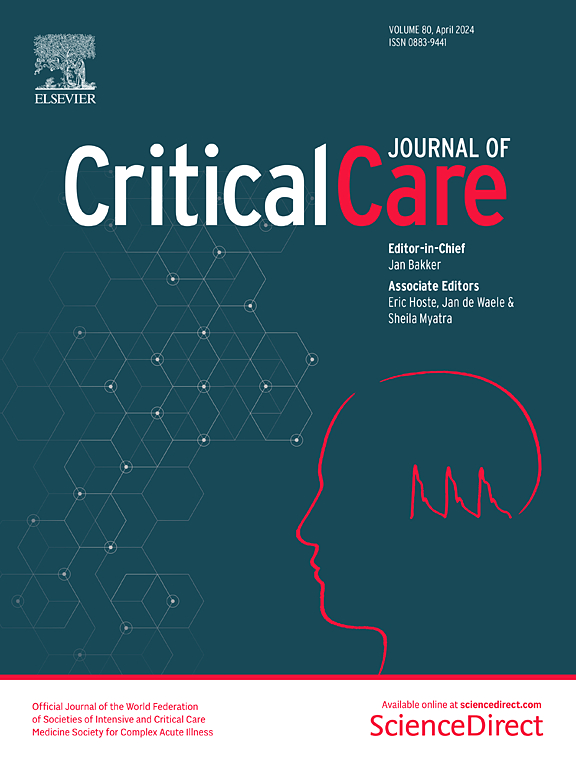Adjuvant therapies for management of hemorrhagic shock: a narrative review
IF 8.8
1区 医学
Q1 CRITICAL CARE MEDICINE
引用次数: 0
Abstract
Severe bleeding remains a leading cause of death in patients with major trauma, despite improvements in care during the acute phase, especially the application of damage control concepts. Death from hemorrhage occurs rapidly after the initial trauma, in most cases before the patient has had a chance to reach a hospital. Thus, the development of adjuvant drugs that would increase the survival of injured patients is necessary. Among the many avenues of research in this area, one is to improve cell survival during tissue hypoxia. During hemorrhagic shock, oxygen delivery to cells decreases and, despite increased oxygen extraction, anaerobic metabolism occurs, leading to acidosis, coagulopathy, apoptosis, and organ dysfunction. We selected six treatments that may help cells cope with this situation and could be used as adjuvant therapies during the initial resuscitation of severe trauma patients, including out-of-hospital settings: niacin, thiazolidinediones, prolyl hydroxylase domain inhibitors, O-GlcNAcylation stimulation, histone deacetylase inhibitors, and adenosine–lidocaine–magnesium solution. For each treatment, the biological mechanism involved and a systematic review of its interest in hemorrhagic shock (preclinical data and human clinical trials) are presented. Promising molecules, some of which are already used in humans for other indications, give us hope for human clinical trials in the field of hemorrhagic shock in the near future.失血性休克的辅助治疗:一个叙述性的回顾
严重出血仍然是严重创伤患者死亡的主要原因,尽管在急性期的护理有所改善,特别是损害控制概念的应用。出血导致的死亡发生在最初的创伤之后,在大多数情况下,在病人有机会到达医院之前。因此,有必要开发辅助药物来提高受伤患者的生存率。在这一领域的许多研究途径中,一个是提高组织缺氧时细胞的存活率。在失血性休克期间,细胞的氧气输送减少,尽管氧气提取增加,但仍发生无氧代谢,导致酸中毒、凝血功能障碍、细胞凋亡和器官功能障碍。我们选择了六种治疗方法,可以帮助细胞应对这种情况,并可作为严重创伤患者最初复苏期间的辅助治疗,包括院外环境:烟酸、噻唑烷二酮类、脯氨酰羟化酶结构域抑制剂、o - glcn酰化刺激、组蛋白去乙酰化酶抑制剂和腺苷-利多卡因-镁溶液。对于每一种治疗,所涉及的生物学机制和系统回顾其对失血性休克的兴趣(临床前数据和人体临床试验)。有希望的分子,其中一些已经用于人类的其他适应症,给我们希望在不久的将来在失血性休克领域进行人体临床试验。
本文章由计算机程序翻译,如有差异,请以英文原文为准。
求助全文
约1分钟内获得全文
求助全文
来源期刊

Critical Care
医学-危重病医学
CiteScore
20.60
自引率
3.30%
发文量
348
审稿时长
1.5 months
期刊介绍:
Critical Care is an esteemed international medical journal that undergoes a rigorous peer-review process to maintain its high quality standards. Its primary objective is to enhance the healthcare services offered to critically ill patients. To achieve this, the journal focuses on gathering, exchanging, disseminating, and endorsing evidence-based information that is highly relevant to intensivists. By doing so, Critical Care seeks to provide a thorough and inclusive examination of the intensive care field.
 求助内容:
求助内容: 应助结果提醒方式:
应助结果提醒方式:


